Cognitive development: Piaget's theory
After studying this topic you should be able to:
- outline and evaluate Piaget’s theory of cognitive development
- discuss the empirical evidence related to the theory
- describe and evaluate practical applications of the theory
Piaget’s theory of cognitive development
Piaget’s theory is sometimes called an ‘ages and stages theory’ because of the concept of stages. However, the structure of the intellect and the way development takes place (through disequilibrium and accommodation) is just as important.
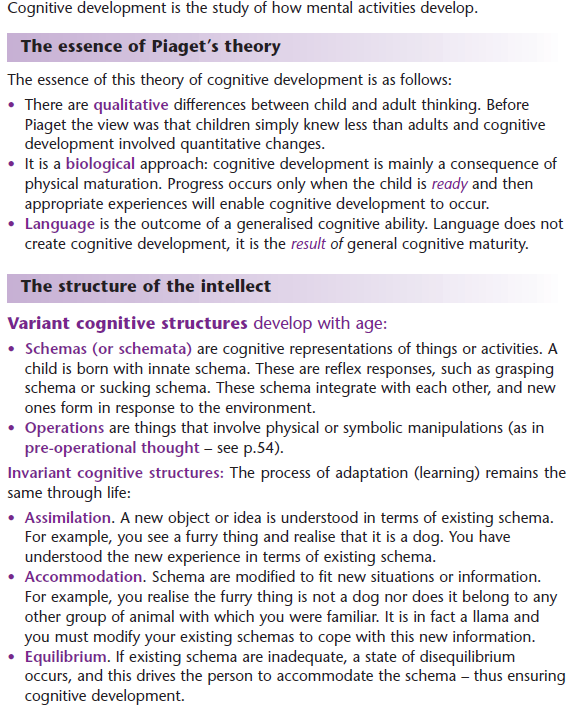
- Piaget’s theory is sometimes called an ‘ages and stages theory’ because of the concept of stages. However, the structure of the intellect and the way development takes place (through disequilibrium and accommodation) is just as important.

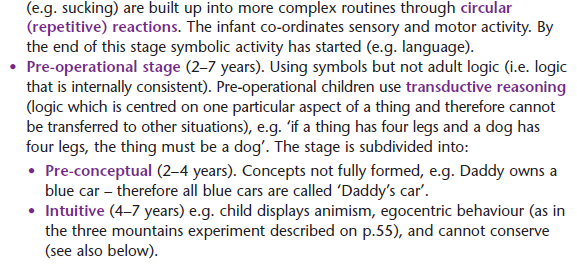
- Note the use of the word ‘operational’ which refers to the kind of mental logic which the child is using. Addition is an example of an ‘operation’.
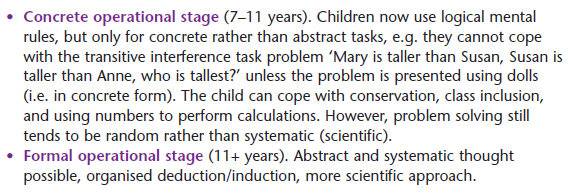
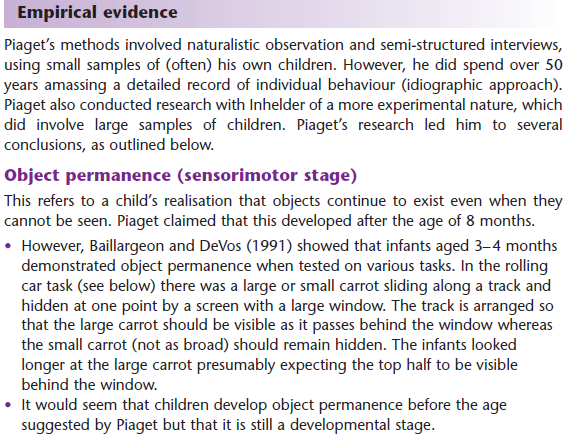

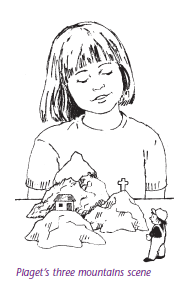
Egocentrism (intuitive pre-operational stage)
Pre-operational children find it hard to take the perspective of another.
In the three mountains experiment Piaget and Inhelder (1956) asked childrenaged 4–12 to say how a doll, placed in various positions, would view a model of a mountain range (see diagram). The youngest children could only work from their own perspective, but by the age of nine they were sure of the doll’s perspective.
However, Hughes (1975) achieved better performance by hiding a doll from atoy policeman and Borke (1975) used the character Grover from Sesame Street driving along in his fire engine, again finding that younger children were not as egocentric as Piaget suggested.
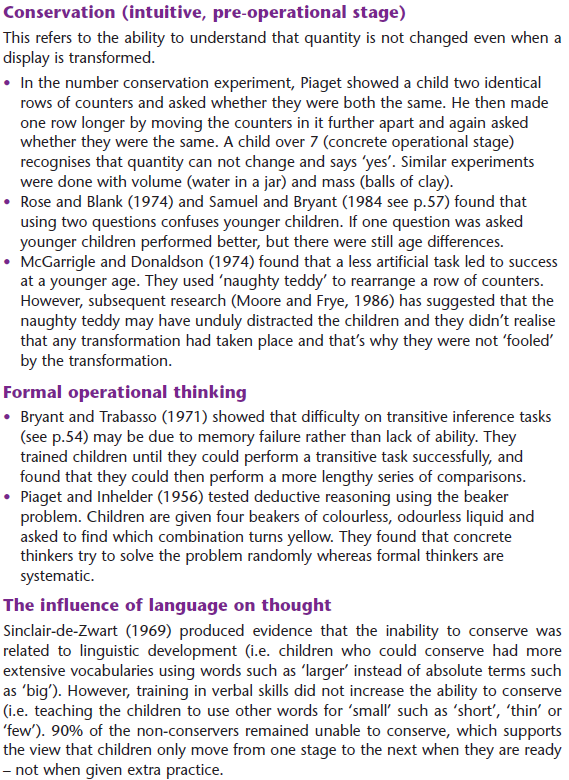
PROGRESS CHECK

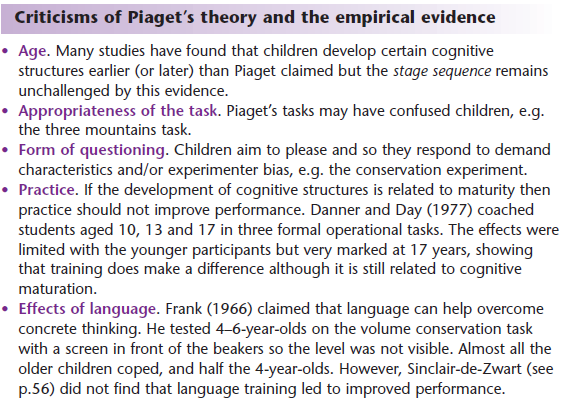
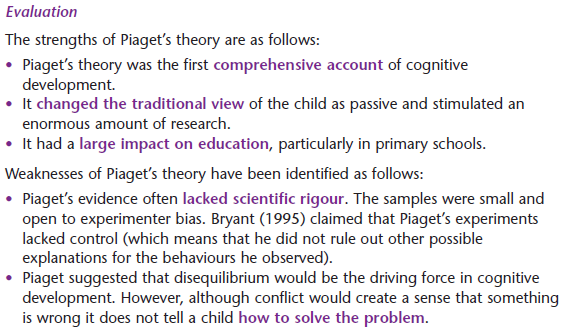
Practical applications to education
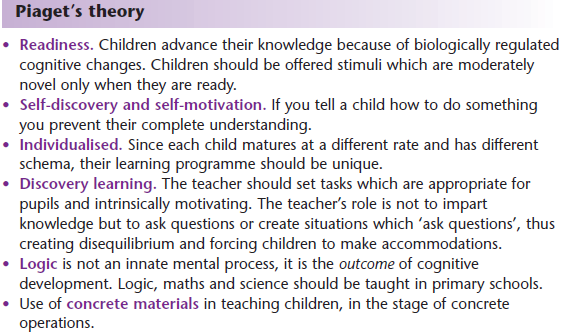
- ‘Each time one prematurely teaches a child something he could have discovered for himself, that child is kept from inventing it and consequently from understanding it completely’ (Piaget, 1970).
